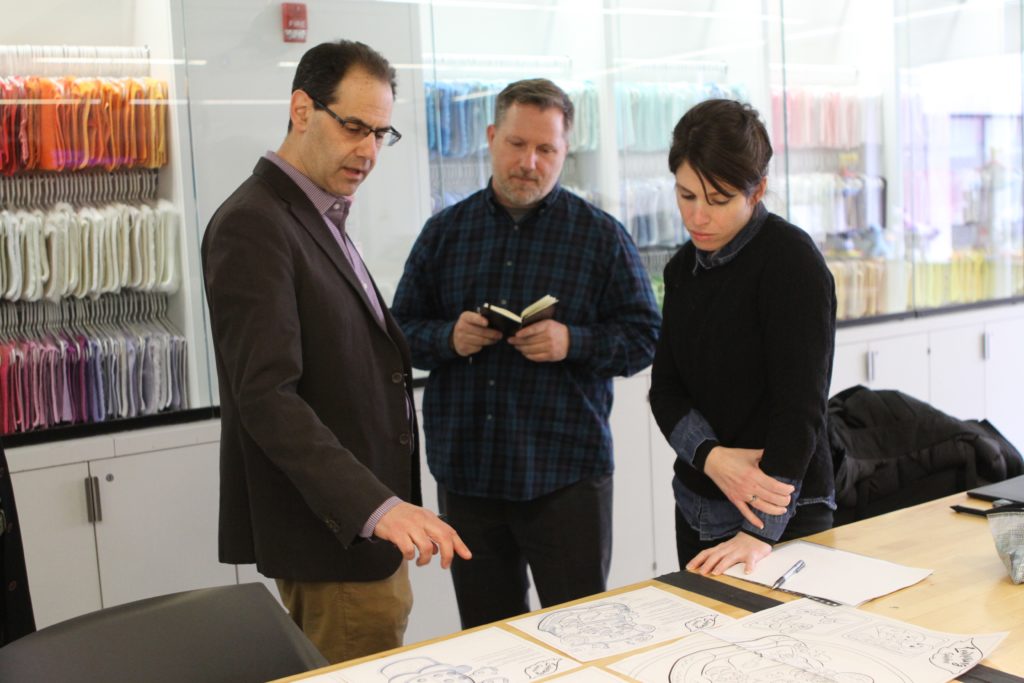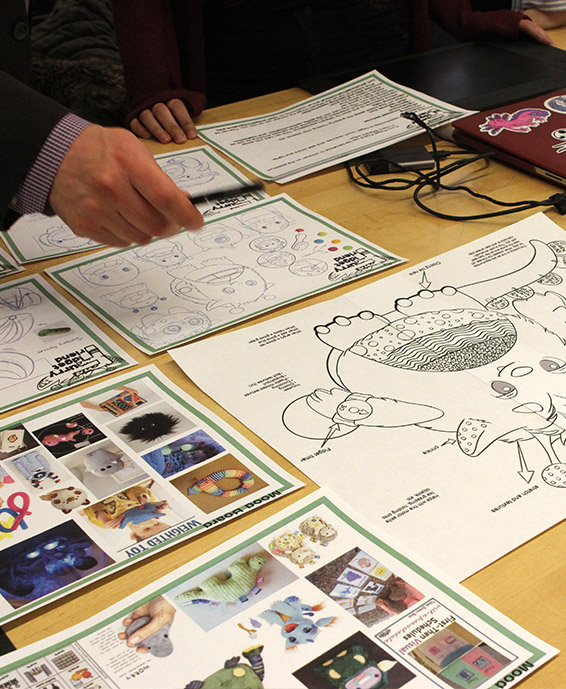More
Menu

Purpose/Impact
Children on the autism spectrum have difficulty with social interaction and have a restricted range of activities and interests. Autism spectrum disorders are growing more prevalent—as many as 1 in 88 children—and there is currently a dearth of products developed specifically with these children in mind. Intelligent product design has tremendous potential to help them engage with each other and the world, and could markedly improve the lives of these children and their families.
Outcomes/Accomplishments
FIT Toy Design students make site visits to the school to observe classes and integrate their field observations into their designs. The school building, constructed in 2010 and specifically created for students on the autism spectrum, offers FIT students a unique immersive experience. This setting allows student toy designers the rare opportunity to directly observe students on the autism spectrum and their teachers, and brainstorm designs that meet their needs, as well as the needs of their therapists.


Status Update
BFA Toy Design students are completing the second phase of the Toy Design Department’s initiative to design products for children on the autism spectrum.
Early in the first year of this ambitious initiative, students were immersed in research and presentations from experts in autism spectrum disorder from the Hassenfeld Child Health Innovation Institute in Providence, Rhode Island, and national autism advocacy organization The Autism Project. After studying research, theory, and video case studies, students completed field observations at LearningSpring School. Over two visits, FIT students observed autistic students in their academic classes and recess sessions. After noting the children’s play patterns, FIT students used that knowledge to inform their designs for toys for early-childhood-aged children with autism.
In April, the presenters from the Hassenfeld Child Health Innovation Institute and The Autism Project—Dr. Patrick Vivier, Dr. Stephen Sheinkopf, and Joanne Quinn—visited FIT to offer feedback on students’ initial concept sketches and ideation pages. The next step is a final, formalized share of the completed concept boards with the group from Hassenfeld Child Health Innovation Institute.
Students showing their designs at the industry critique
Students showing their designs at the industry critique
FIT’s Toy Design Lab
Students showing their designs at the industry critique
Students showing their designs at the industry critique
Previous
Next



